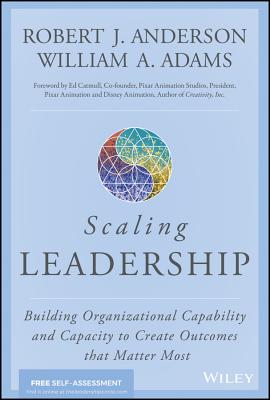Knowledge Leadership: The Art and Science of the Knowledge-based Organization
暫譯: 知識領導:知識型組織的藝術與科學
Steven A. Cavaleri Ph.D., Sharon Seivert
- 出版商: Butterworth-Heineman
- 出版日期: 2005-05-30
- 售價: $1,320
- 貴賓價: 9.5 折 $1,254
- 語言: 英文
- 頁數: 376
- 裝訂: Paperback
- ISBN: 0750678402
- ISBN-13: 9780750678407
-
相關分類:
企業資源規劃 Erp、管理與領導 Management-leadership
立即出貨 (庫存=1)
買這商品的人也買了...
-
 Java 與 XML 技術手冊
Java 與 XML 技術手冊$390$308 -
 Visual Studio .NET 高手攻略
Visual Studio .NET 高手攻略$580$458 -
 ASP.NET 程式設計徹底研究
ASP.NET 程式設計徹底研究$590$466 -
 鳥哥的 Linux 私房菜─基礎學習篇增訂版
鳥哥的 Linux 私房菜─基礎學習篇增訂版$560$476 -
 MATLAB 程式設計-入門篇, 2/e
MATLAB 程式設計-入門篇, 2/e$600$199 -
 Solaris 10 徹底研究
Solaris 10 徹底研究$590$460 -
 The Zen of CSS Design─網頁視覺設計的王道 (The Zen of CSS Design: Visual Enlightenment for The Web)
The Zen of CSS Design─網頁視覺設計的王道 (The Zen of CSS Design: Visual Enlightenment for The Web)$780$663 -
 Microsoft Exchange Server 2003 SP1 管理實務
Microsoft Exchange Server 2003 SP1 管理實務$580$458 -
 Windows XP 問題追緝令通殺 200 道棘手難題
Windows XP 問題追緝令通殺 200 道棘手難題$280$221 -
 駭客現形 (Hacking Exposed, 5/e)
駭客現形 (Hacking Exposed, 5/e)$860$731 -
 Project 2007 徹底研究
Project 2007 徹底研究$720$562 -
 深入淺出 C# (Head First C#)
深入淺出 C# (Head First C#)$980$774 -
 程式之美-微軟技術面試心得
程式之美-微軟技術面試心得$490$417 -
 最強!簡報設計大全 1700 套創意範本 × 背景素材 × 圖示 × 配色
最強!簡報設計大全 1700 套創意範本 × 背景素材 × 圖示 × 配色$520$406 -
 Google Android 2.X 應用程式開發實戰
Google Android 2.X 應用程式開發實戰$520$411 -
 程式設計師的自我修養-連結、載入、程式庫
程式設計師的自我修養-連結、載入、程式庫$580$458 -
 Google!Android 2 手機應用程式設計入門, 3/e
Google!Android 2 手機應用程式設計入門, 3/e$530$419 -
 深入淺出 Android 遊戲程式開發範例大全
深入淺出 Android 遊戲程式開發範例大全$620$484 -
 Google Android SDK 開發範例大全 2
Google Android SDK 開發範例大全 2$890$757 -
 深入淺出 Android 系統原理及開發要點
深入淺出 Android 系統原理及開發要點$450$351 -
 軟體構築美學:當專案團隊遇上失控程式,最真實的解決方案 (Brownfield Application Development in .Net)
軟體構築美學:當專案團隊遇上失控程式,最真實的解決方案 (Brownfield Application Development in .Net)$650$553 -
 最嚴選 PHP 案例模組開發講座
最嚴選 PHP 案例模組開發講座$580$458 -
 jQuery 實戰手冊 (jQuery in Action, 2/e)
jQuery 實戰手冊 (jQuery in Action, 2/e)$520$411 -
 Android 案例開發完全講義
Android 案例開發完全講義$580$458 -
 人人都是產品經理─從門外漢到專業扮演
人人都是產品經理─從門外漢到專業扮演$280$218
相關主題
商品描述
Description:
In Knowledge Leadership, Cavaleri and Seivert describe the dawning of a new era in which individuals are “leading” rather than “managing” knowledge. In the past, many knowledge-based initiatives have failed because leaders underestimated the powerful link between knowledge and performance improvement – and also because they mistakenly thought that “information” was the same as knowledge. Cavaleri and Seivert claim that, while information is a necessary precursor to knowledge, it is not sufficient in itself for improving business performance.
The authors describe notable organizations that use the pragmatic knowledge strategies they describe to gain competitive advantage. Pragmatic knowledge is the result of individuals’ developing a deeper understanding of how (and why) things work best in practice. The process of creating pragmatic knowledge transforms key lessons from systems thinking, total quality management, and organization learning into a powerful new business strategy.
To help readers apply the concepts and tools in this book, Cavaleri and Seivert draw on case examples and a decade of original cross-cultural research about knowledge leadership. They also invite readers to use The Knowledge Bias Profile to discover their knowledge leadership style. The book systematically outlines a user-friendly strategy for becoming a knowledge leader and for building high-performing, knowledge-based organizations.
Table of Contents:
Part I. Why Should You Care about Knowledge Leadership?
Chapter 1: The Knowledge Leadership Challenge
Chapter 2: The Emerging Era of the Knowledge Leader
Part II: Becoming a Knowledge Leader
Chapter 3: Discovering Your Knowledge Leadership Style
Chapter 4: Learning from Commissar and Yogi Leaders
Chapter 5: Stepping Back to Envision New Possibilities
Chapter 6: Studying Knowledge Leadership Behavior:
Lessons from Cross-Cultural Research
Part III: Putting Knowledge into Action
Chapter 7 Aligning Knowledge with Business Strategies
Chapter 8 Understanding the Role of Knowledge in Organizations
Part IV: Developing Pragmatic Knowledge
Chapter 9: Putting Action into Knowledge
Chapter 10 Learning to Make Knowledge Pragmatic
Chapter 11 Leading Knowledge Processing
Part V: Leading FAST Knowledge-Based Organizations (KBOs)
Chapter 12 Developing FAST KBOs
Chapter 13 Learning from Experience: A Case of Mistaken Identity
Chapter 14: Balancing Knowledge and Management Systems
Chapter 15 Constructing Effective Knowledge Infrastructures
Part VI: Putting it all Together
Chapter 16 Using 5-Point Dynamic Mapping to Lead FAST KBOs
Appendices:
Appendix A: Development and Use of the Knowledge Bias Profile
Appendix B: Essentials of Creating Pragmatic Knowledge
Appendix C: 5-Point Dynamic Career Mapping for Talent Retention and Development
商品描述(中文翻譯)
描述:
在《知識領導力》中,Cavaleri 和 Seivert 描述了一個新時代的來臨,在這個時代中,個體是「領導」而非「管理」知識。過去,許多基於知識的倡議失敗,因為領導者低估了知識與績效改善之間的強大聯繫,並且錯誤地認為「資訊」與知識是相同的。Cavaleri 和 Seivert 主張,雖然資訊是知識的必要前提,但僅有資訊並不足以改善商業績效。
作者描述了一些著名的組織,這些組織利用他們所描述的務實知識策略來獲得競爭優勢。務實知識是個體對事物如何(以及為什麼)在實踐中運作最佳的深入理解的結果。創造務實知識的過程將系統思考、全面品質管理和組織學習中的關鍵教訓轉化為一種強大的新商業策略。
為了幫助讀者應用本書中的概念和工具,Cavaleri 和 Seivert 引用了案例示例和十年的跨文化研究,這些研究關於知識領導力。他們還邀請讀者使用《知識偏見檔案》來發現他們的知識領導風格。本書系統地概述了一種使用者友好的策略,以成為知識領導者並建立高效能的知識型組織。
目錄:
第一部分:為什麼你應該關心知識領導力?
第1章:知識領導力挑戰
第2章:知識領導者的新興時代
第二部分:成為知識領導者
第3章:發現你的知識領導風格
第4章:向專員和瑜伽領導者學習
第5章:退後一步,展望新可能性
第6章:研究知識領導行為:來自跨文化研究的教訓
第三部分:將知識付諸行動
第7章:將知識與商業策略對齊
第8章:理解知識在組織中的角色
第四部分:發展務實知識
第9章:將行動轉化為知識
第10章:學習如何使知識務實
第11章:領導知識處理
第五部分:領導快速知識型組織(KBOs)
第12章:發展快速 KBOs
第13章:從經驗中學習:一個錯誤身份的案例
第14章:平衡知識與管理系統
第15章:構建有效的知識基礎設施
第六部分:將一切整合在一起
第16章:使用 5 點動態映射來領導快速 KBOs
附錄:
附錄 A:知識偏見檔案的開發與使用
附錄 B:創造務實知識的要素
附錄 C:人才保留與發展的 5 點動態職業映射































